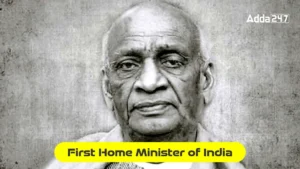The Central Board of Indirect Taxes and Customs (CBIC) is the top authority in India responsible for managing and overseeing indirect taxes and customs duties. Operating under the Department of Revenue, Ministry of Finance, Government of India, CBIC is pivotal in formulating policies, enforcing laws, and ensuring effective revenue collection related to customs, Goods and Services Tax (GST), and other indirect taxes.
An Overview of Central Board of Indirect Taxes and Customs (CBIC)
CBIC stands for the Central Board of Indirect Taxes and Customs. Established under the Central Board of Revenue Act, 1963, CBIC functions as an integral part of the Department of Revenue. Its primary focus is on efficient revenue collection, promoting trade facilitation, and ensuring compliance with the laws governing customs and indirect taxes in India.
Key Information about CBIC
- Full Form: Central Board of Indirect Taxes and Customs
- Established: Under the Central Board of Revenue Act, 1963
- Role: Administering customs duties, excise duties, and Goods and Services Tax (GST)
- Function: Formulating policies, facilitating trade, ensuring compliance, and revenue collection
- Chairperson: Senior-most IRS officer in Customs & Indirect Taxes; ex officio Special Secretary to the Government of India
- Composition: Includes members responsible for Customs, IT & Taxpayer Services, Central Excise, Service Tax & Legal matters, GST & Tax Policy, Administration & Vigilance, and Investigation
Missions of CBIC
The mission of the Central Board of Indirect Taxes and Customs (CBIC) is to administer and facilitate indirect taxes and customs operations efficiently. CBIC’s mission includes:
- Efficient Revenue Collection: Ensuring the efficient collection of customs duties, excise duties, and GST revenues.
- Trade Facilitation: Simplifying customs procedures and reducing bureaucratic hurdles to facilitate smoother cross-border trade.
- Effective Policy Implementation: Implementing customs, excise, and GST policies in a manner that balances revenue goals with trade promotion.
- Enhanced Compliance: Ensuring voluntary compliance with customs and indirect tax laws by raising awareness and enforcing laws.
- Modernization and Technology: Embracing modern technologies to streamline processes, enhance transparency, and provide user-friendly platforms.
- International Collaboration: Collaborating with international customs and tax authorities to share best practices and combat global trade-related challenges.
- Transparency and Accountability: Maintaining transparency in operations and fostering a culture of integrity.
- Stakeholder Engagement: Engaging with various stakeholders to align policies and operations with their concerns.
Regulatory Functions of the CBIC
CBIC carries out various regulatory functions related to indirect taxes, customs, and trade, ensuring compliance with tax laws and facilitating legitimate trade. These functions include:
- Customs Regulations: Formulating and enforcing regulations governing customs duties and procedures.
- GST Compliance: Overseeing GST compliance by developing guidelines and ensuring businesses adhere to the GST law.
- Tariff Classification: Classifying goods under the Harmonized System of Nomenclature (HSN) for customs and GST Rate Schedule for GST.
- Trade Facilitation: Simplifying customs procedures to expedite the movement of goods across borders.
- Risk Management: Employing risk-based strategies to identify and target high-risk shipments for inspection.
- Anti-Evasion Measures: Conducting audits, investigations, and surveillance to detect non-compliance and unauthorized activities.
- Valuation Control: Ensuring accurate valuation of imported and exported goods in line with international standards.
- IPR Protection: Collaborating with relevant authorities to enforce Intellectual Property Rights (IPR) protection.
- Trade Policy Implementation: Administering trade policy measures such as duty drawback, export incentives, and trade agreements.
- Legal Framework: Drafting and amending regulations related to customs, GST, and other indirect taxes.
- Stakeholder Engagement: Engaging with trade associations, industry bodies, and other stakeholders to address concerns and gather feedback.
Members of Central Board of Indirect Taxes and Customs (CBIC)
The CBIC Chairperson is the highest-ranking officer among Indian Revenue Service (IRS – Customs & Indirect Taxes) officers. The Chairperson also serves as the ex officio Special Secretary to the Government of India. Appointed by the Appointments Committee of the Cabinet (ACC), the Chairperson leads a team of members responsible for various domains, including Customs, Information Technology & Taxpayer Services, Central Excise, Service Tax & Legal matters, GST & Tax Policy, Administration & Vigilance, and Investigation.
CBIC Attached and Subordinate Offices
CBIC oversees a network of attached and subordinate offices across India, facilitating the administration of customs, excise, and indirect tax-related functions. These offices include:
- Customs Commissionerates: Regional offices that administer customs-related activities, including import and export clearances and cargo examinations.
- GST Commissionerates: Offices that manage GST-related matters, such as registration, filing of returns, and audits.
- Central Excise Commissionerates: Offices handling excise duty-related functions.
- Central Tax Commissionerates: Offices managing tax-related functions under the GST framework.
- Directorates: Specialized directorates like the Directorate General of Revenue Intelligence (DRI), Directorate General of GST Intelligence (DGGI), and Directorate General of Taxpayer Services (DGTS).
- Customs Preventive Units: Units responsible for preventing and detecting customs violations.
- Central Revenues Control Laboratory (CRCL): A laboratory that conducts testing and analysis of goods for customs and excise purposes.
- Customs Houses and Taxpayer Service Centers: Offices offering services to traders, importers, exporters, and taxpayers.
- Appellate Authorities: Offices handling appeals filed by taxpayers against decisions made by lower authorities.
- Directorate General of Training (DGT): Responsible for training customs and indirect tax officials.





 Which City is known as the City of Bambo...
Which City is known as the City of Bambo...
 Who was the First Home Minister of India...
Who was the First Home Minister of India...







